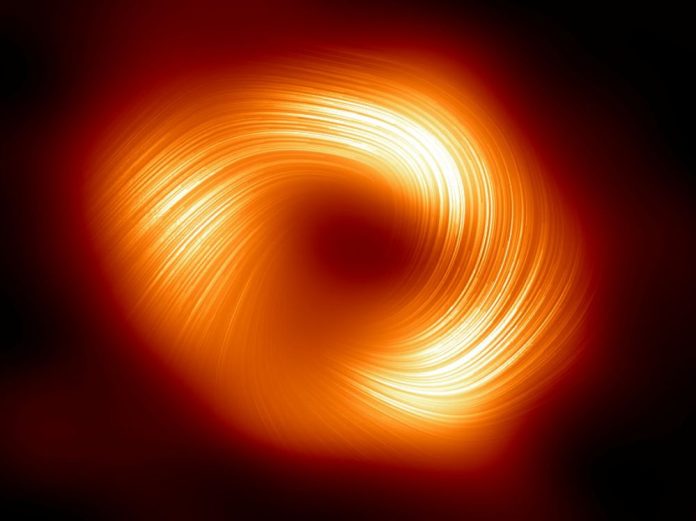
The James Webb Space Telescope (JWST) keeps finding supermassive black holes (SMBH) in the early Universe.
They’re in active galactic nuclei seen only 500,000 years after the Big Bang. This was long before astronomers thought they could exist. What’s going on?
Monster black holes like the ones at the hearts of galaxies take a really long time to grow so massive.
They could start as smaller ones that gobble up nearby stars and gases, or they can grow by merging with other supermassive black holes.
That typically takes billions of years and a lot of material to build up to something as massive as the four-million-solar-mass one in the heart of our Milky Way Galaxy.
It’s even longer for the really big ones that contain tens of millions of stellar masses.
JWST has spotted many SMBH that already appear “old” and massive less than a billion years after the Big Bang. It’s not an observational fluke—they’re really there.
“How surprising it has been to find a supermassive black hole with a billion-solar-mass when the universe itself is only half a billion years old,” said astrophysicist Alexander Kusenko, a professor of physics and astronomy at UCLA.
“It’s like finding a modern car among dinosaur bones and wondering who built that car in the prehistoric times.”
Building Supermassive Black Holes in Ancient Times
So, what built SMBH so early in cosmic history? One obvious process is the death of the first Population III stars that began forming as soon as the infant Universe cooled enough for them to coalesce.
These were massive, metal-poor (meaning they had no elements heavier than helium), and short-lived. When they died as supernovae, they formed stellar-mass black holes. It’s possible those early ones merged and got bigger.
Another suggestion is a so-called “gravo-thermal” collapse of self-interacting dark matter halos. That basically means a negative heat transfer inside a system. That can lead to the collapse of a black hole, and from there, it could have grown.
Astronomers have also considered the participation of primordial black holes created in the moments after the Big Bang. These theoretical low-mass black holes could have formed under special conditions when dense areas of space collapsed quickly. How SMBH formed from primordial black holes isn’t understood at the moment. So, is there another formation theory?
This is where dark matter comes into play. Kusenko and his colleagues dug into the idea of dark matter-influenced collapse. They found that if dark matter decays, it plays a role in “corraling” a hydrogen gas cloud.
It would not fragment (as clouds usually do). Eventually, that could lead to the relatively rapid formation of an SMBH. Since there is evidence of dark matter’s influence in the early Universe, this could explain the monster black holes in the earliest epochs of cosmic history.
From Cloud to Black Hole Formation via Dark Matter?
Of course, the conditions have to be just right for this to happen. “How quickly the gas cools has a lot to do with the amount of molecular hydrogen,” said doctoral student Yifan Lu, the first author on a paper describing the dark matter idea.
“Hydrogen atoms bonded together in a molecule dissipate energy when they encounter a loose hydrogen atom. The hydrogen molecules become cooling agents as they absorb thermal energy and radiate it away.
Hydrogen clouds in the early universe had too much molecular hydrogen, and the gas cooled quickly and formed small halos instead of large clouds.”
Certain radiation can destroy molecular hydrogen. That creates conditions that prevent cloud fragmentation. The radiation could be from somewhere, and Lu and others suggest an interesting idea in their paper.
They state that there’s a possible “parameter space” where relic decaying particles could emit radiation that would spur the collapse. Among other things, they propose an “axion-like” dark matter particle decaying and spurring the eventual coalescence of a cloud of hydrogen into an SMBH.
Mysteries of Dark Matter and SMBH Need Answers
Dark matter itself is a mysterious “stuff” that makes up a very large part of the “stuff” of the Universe. We know about it from its gravitational effects on the objects we can see (called baryonic matter).
The form that dark matter takes isn’t understood at all, however. It could be made of particles that slowly decay, or it could be made of more than one particle species. Some could be stable, others could decay at early times.
In either case, the product of decay could be radiation in the form of photons, which break up molecular hydrogen and prevent hydrogen clouds from cooling too quickly.
Even very mild decay of dark matter yielded enough radiation to prevent cooling, forming large clouds and, eventually, supermassive black holes.
Of course, this idea hasn’t been proven. However, the team points out that the decay of such particles of dark matter can emit light in both the optical and ultraviolet spectrum.
That might explain the very precise measurements of the “cosmic optical background” (COB) seen by the New Horizons LORRI instrument.
The COB is a visible light background roughly analogous to the cosmic microwave background.
Think of it as the sum of all emissions from objects beyond the Milky Way Galaxy. Its presence allows astronomers to diagnose and understand the emissions from all astrophysical objects.
There’s still a lot to study and understand about these possible axions (if they make up dark matter).
Written by Carolyn Collins Petersen/Universe Today.



